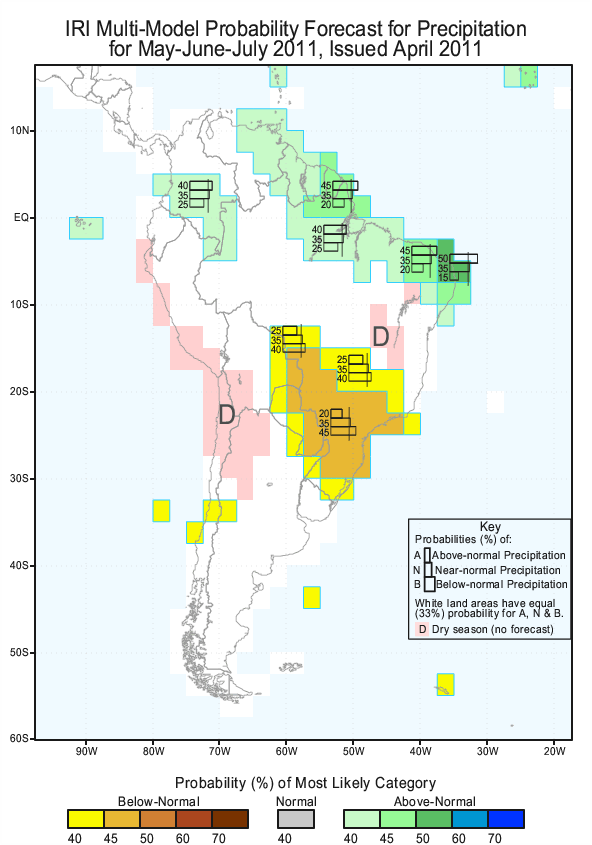| May 04, 2011 | No. 41 |
April Showers Bring May Insects
I posted the April 2011 weather data for the Palmira Weather Station. We had a total of 5.05 inches of rain at the Palmira Station for the month. Craig Bennett in Los Naranjos (just north of the Ruiz Coffee Shop) reports 3.47 inches of rain for the month and Terry Zach in El Santuario reports 4.60 inches. How does this compare to previous years? Based upon 5 years of climate data there has been an average of 7.7 inches of rain in the month of April with a standard deviation of 6.02 inches. The lowest rainfall in April was 2.01 inches in 2009 and the highest was 16.23 inches in 2010 (last year).
Our total rainfall for the year 2011 at the Palmira Station is now 11.65 inches. So far, I think we are having a generally normal gradual entry into the rainy season.
The winds in April averaged 5.1 miles per hour with a maximum recorded wind of 27.3 mph. The winds were less in April as compared with March which is expected. We start to get less and less wind as the rainy season comes upon us. This starts opening the door for the southern winds to start pushing moisture laden clouds off the Pacific Ocean into Panama. As the clouds are pushed inland they rise more and more forming thunder storms. Consequently, we start getting more and more rain. May is often one of our rainiest months.
Your Help is Needed
You may know that we had a significant earthquake in the early hours of April 30. We awoke to quite a bed shaker. The USGS reports that it was a 6.0 magnitude earthquake with the epicenter south of Panama in the Pacific 178 km (110 miles) south of David. We certainly felt it here in Palmira. The trembling lasted a good 10 seconds. I reported it and asked if others had reported it. I was the only one that reported it. I was a bit surprised because I thought that surely others had felt it. Asking around I did find that others had experienced it but had not reported it.
Please take the brief amount of time required and report the earthquakes you feel. All you have to do is go to the Boquete Weather Website Earthquakes Section and click on the Earthquake Report Form. You fill out the online form and click the send button. Those monitoring earthquakes in our region need this as a part of their research. This seems like a small matter, but it is very important in earthquake research. For more information about monitoring and reporting earthquakes go here.
The ENSO continues to be in the La Niña phase. La Niña is expected to gradually weaken into a neutral phase by June of 2011. Here is the link to the latest La Niña report. If interested, you can monitor this and get weekly updates at the NOAA Climate Prediction Center at this link.
The IRI (International Research Institute for Climate and Society) is reporting generally normal precipitation for Central America May through July. Here is the graph that they issued in April 2011:

The April showers will now ramp-up into the rainy season during the month of May. Have you noticed that the insects have increased significantly? This always happens at the beginning of the rainy season. These insects are a very important food supply for all the birds as they begin their major mating/nesting time of year. So when you see those clouds of insects on your windows at night pause and be thankful not only for the windows but that the birds have their food supply. Also be thankful that most of them are not man eating insects. As the rains start to fall more often, remember that the rain forests and all the life in them need the rain as well as the insects. It is also sort of an atmospheric cleanser. Without the rain, this would not be the Emerald Paradise and clean air that it is. Also remember that umbrellas need the rain to fulfill their major purpose of protecting us! Use them generously.
Lloyd Cripe
